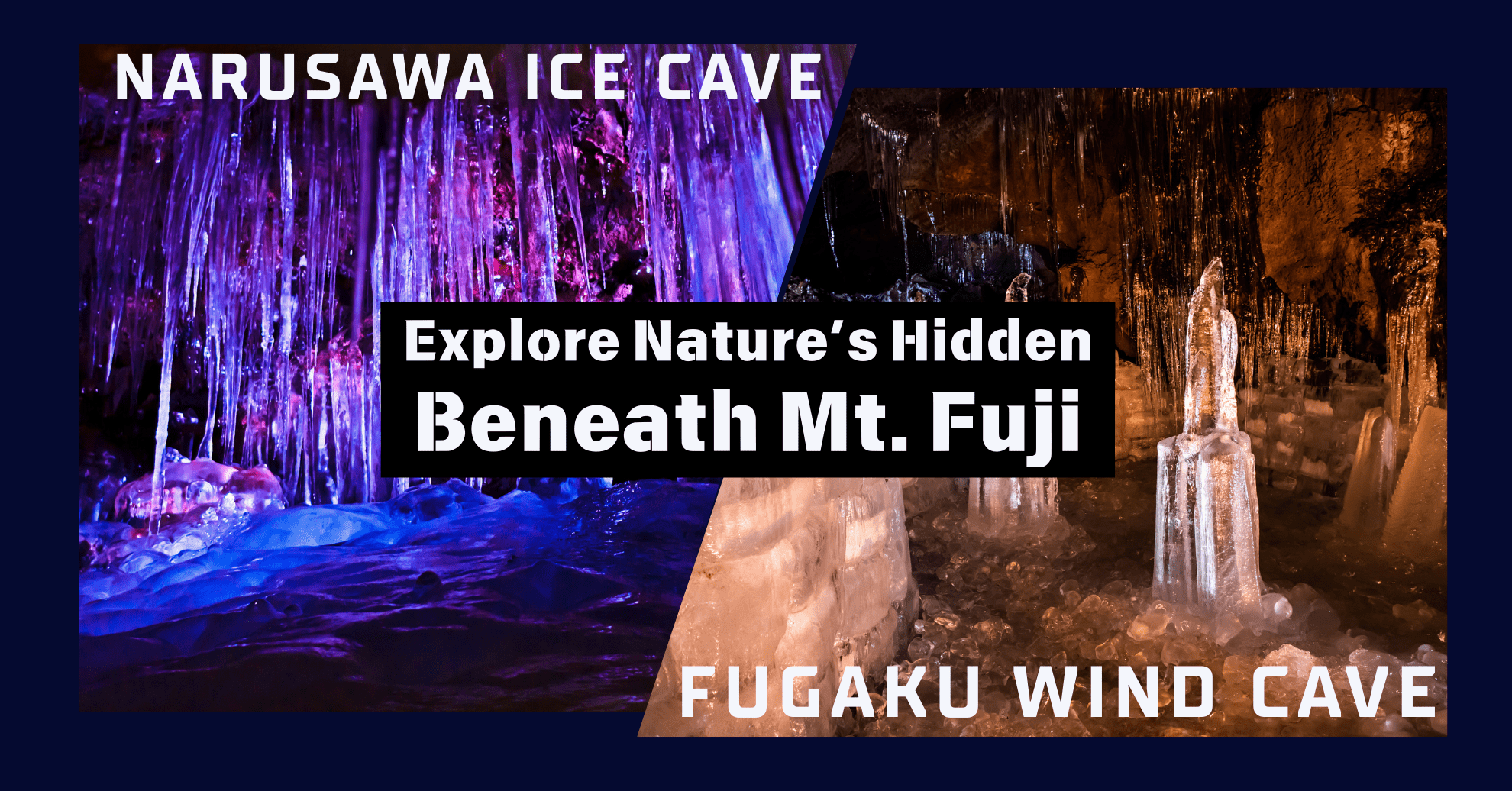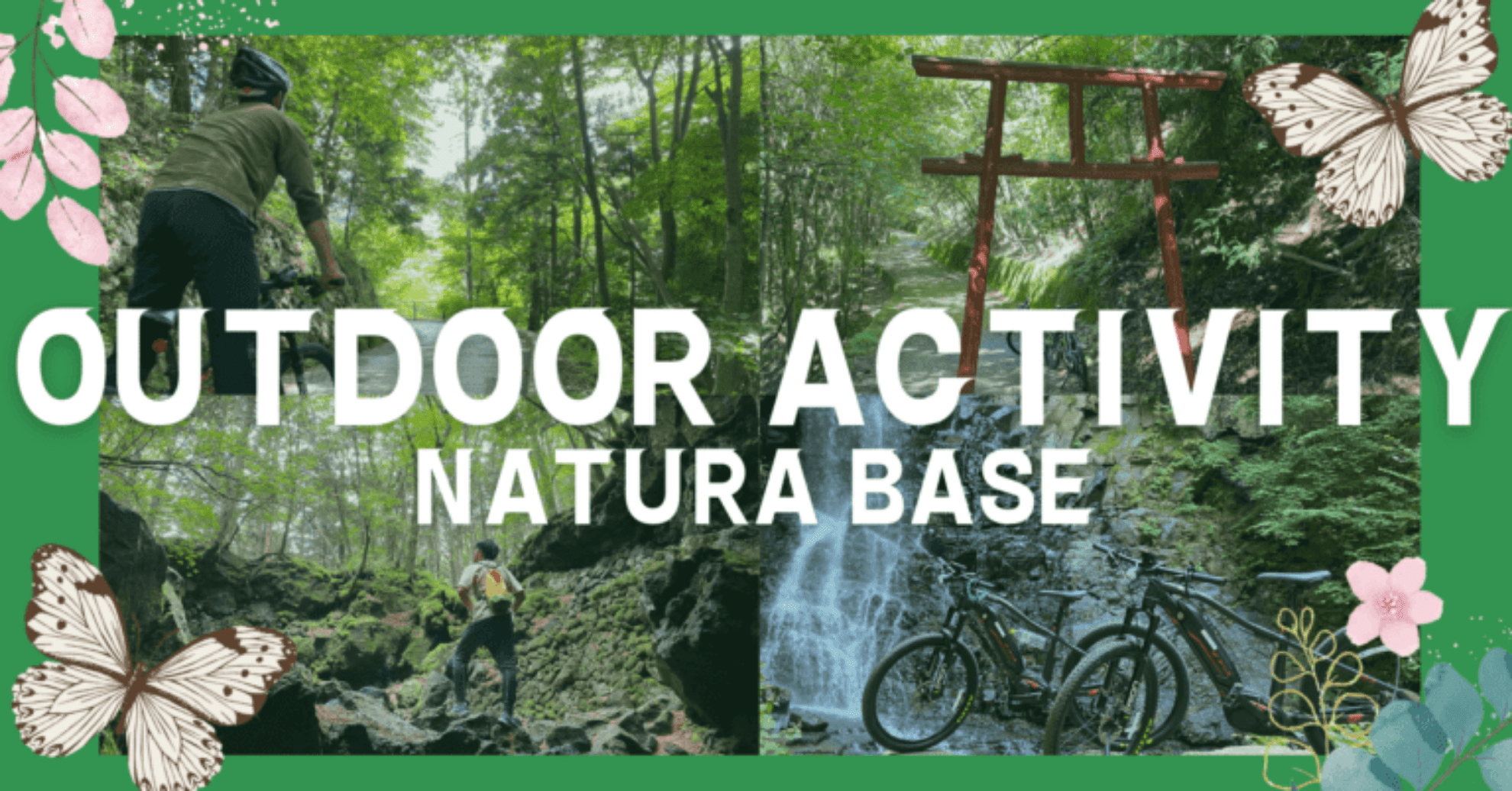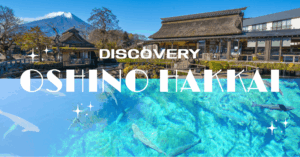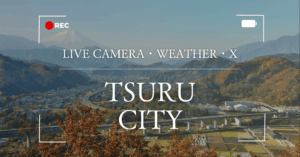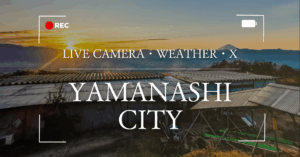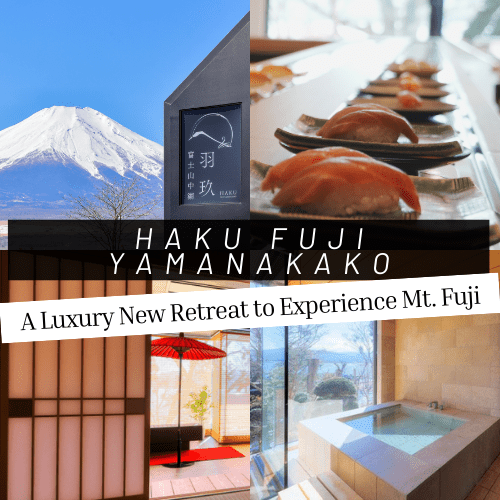When it comes to must-visit destinations around Narusawa Village in Yamanashi Prefecture, two spots stand out: the Narusawa Ice Cave and the Fugaku Wind Cave. Both are designated as National Natural Monuments and are among the most famous attractions formed by the eruptions of Mt. Fuji.
These mysterious lava caves attract countless visitors from Japan and abroad, and in recent years they have become so popular that even on weekdays you’ll often find lines of tourists waiting to enter.
Inside both the Narusawa Ice Cave and Fugaku Wind Cave, the temperature remains a cool 0–3°C year-round, making them ideal as natural “air-conditioned” retreats during the hot summer months. Families, couples, and adventure seekers alike can easily enjoy an exciting underground exploration here.
In this guide, we’ll take a closer look at the origins and highlights of these two caves, while also introducing nearby attractions that you can combine for a full-day adventure around Mt. Fuji.
What Is the Narusawa Ice Cave?
The History of the Narusawa Ice Cave
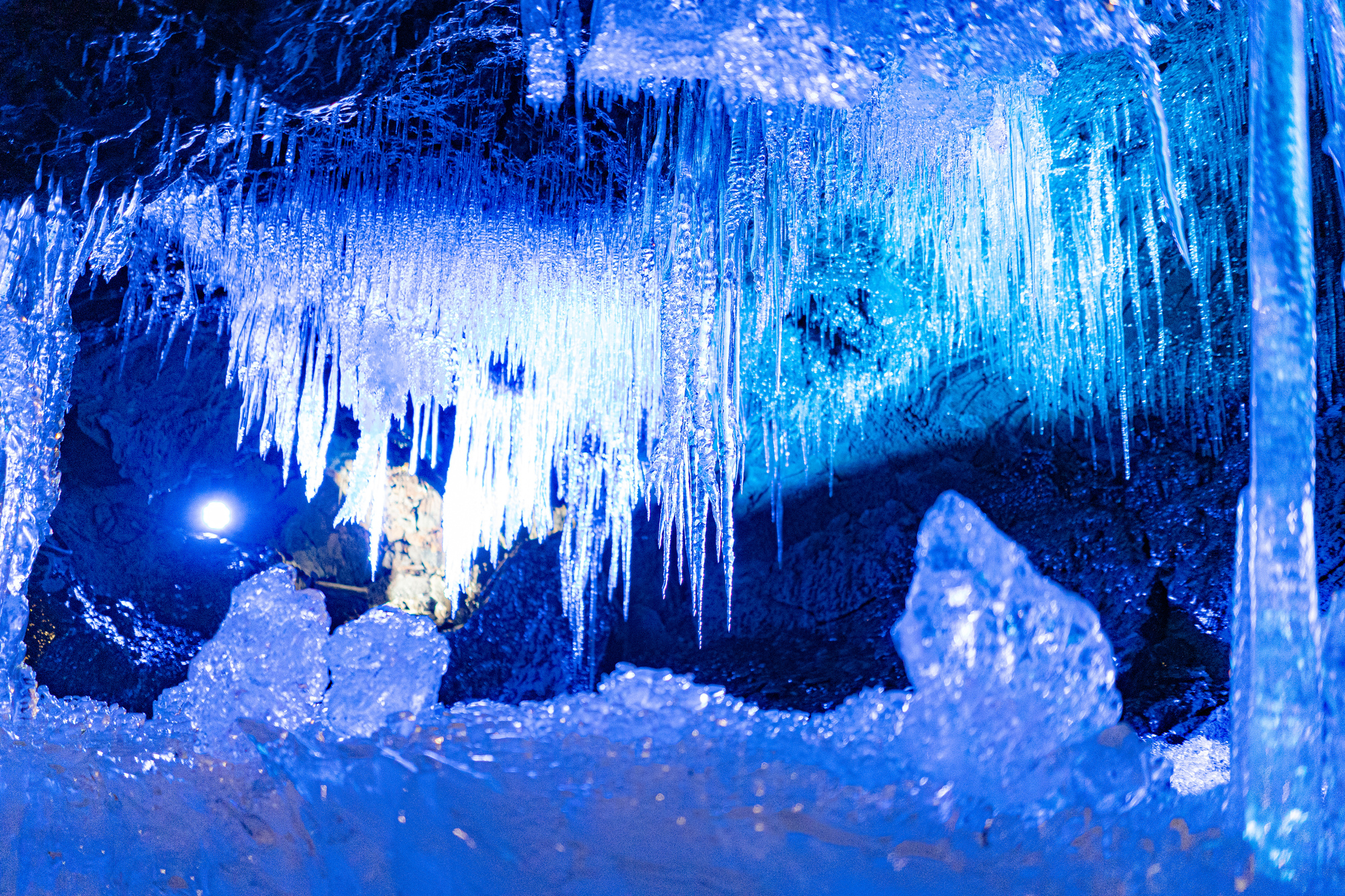
The Narusawa Ice Cave was formed when cooling lava created gas pockets inside the molten rock. As the gases escaped, empty cavities remained, eventually giving shape to this mysterious cave.
The cave’s origins date back to June 864 AD, during the catastrophic Jogan Eruption of Mt. Fuji. Known as Japan’s tallest and most iconic active volcano, Mt. Fuji has erupted many times throughout history, with layers of lava and ash creating its present-day form. Among these eruptions, the Jogan Eruption is considered one of the most devastating, leaving visible marks on the landscape that can still be seen today.
One of the most striking results of this eruption is the transformation of the Fuji Five Lakes area. Before the eruption, there were only four lakes: Lake Motosuko, Lake Kawaguchiko, and Lake Yamanakako, along with a massive body of water called “Senoumi.” The huge lava flows from the eruption split Senoumi into two smaller lakes—Lake Shojiko and Lake Saiko—thus creating the five-lake formation that we know today.
In the same way, the powerful lava flows that reshaped the landscape also created the Narusawa Ice Cave.
Following its formation, the cave was utilized as a natural freezer. From around 1900 to 1937, it was mainly used to store silkworm eggs, while natural ice harvesting also took place.
The Narusawa Ice Cave was officially designated a National Natural Monument in December 1929. By the mid-1960s, meltwater from the cave’s ice was drawn up through wells and used as domestic water.
During wartime, tourism stopped entirely, and it is said that the cave’s entrance became sealed off with ice, preventing access for many years.
Step Into a 153-Meter Lava Cave Adventure!
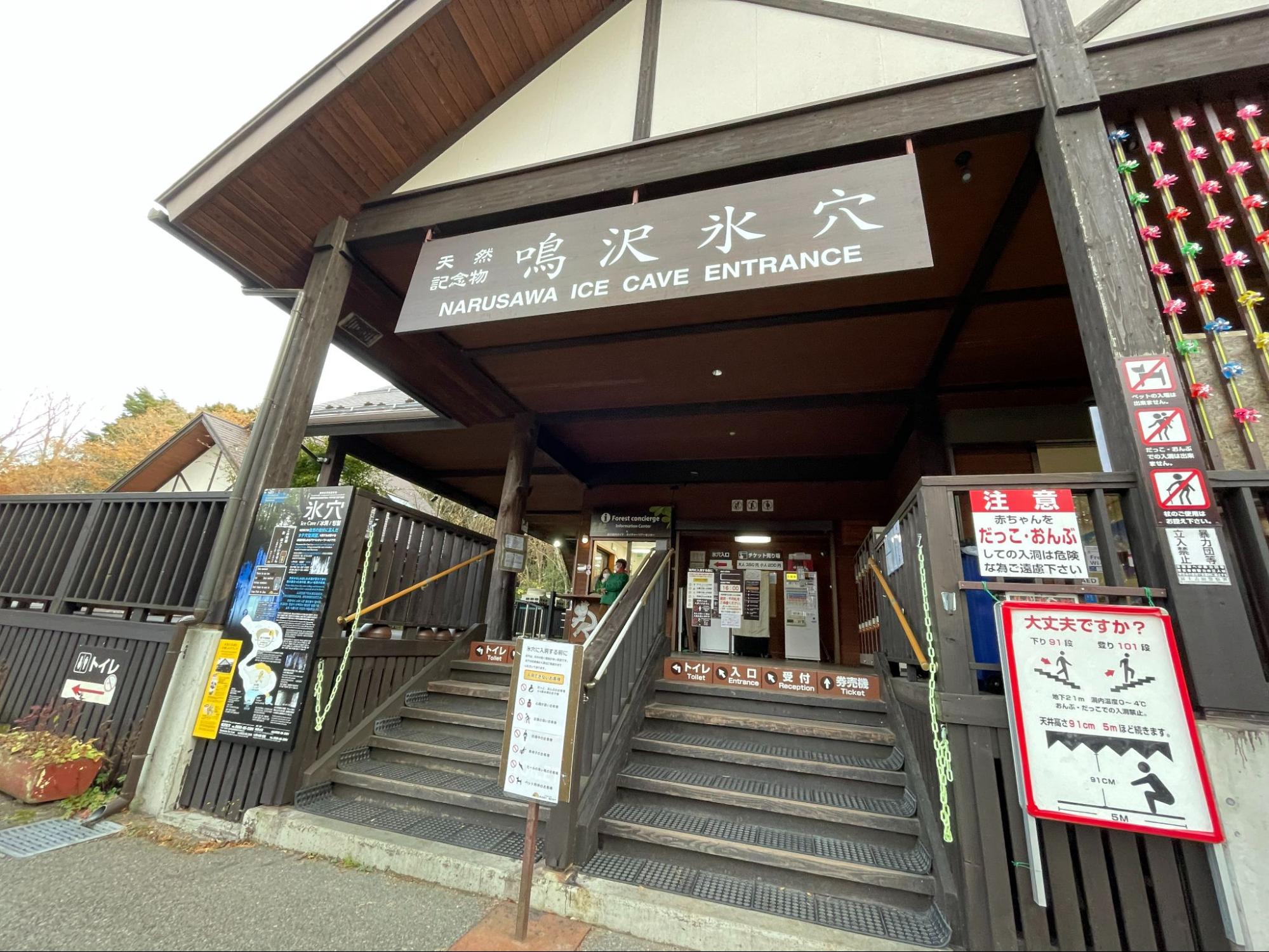
Your journey begins at the entrance, where you’ll purchase a ticket before descending into the cave. Be prepared for a challenge—there are 91 steps down and 101 steps back up, reaching a depth of about 21 meters underground, where the temperature remains a brisk 0–4°C (32–39°F). Helmets are available for rent, a clear sign of just how narrow and adventurous this cave can get.
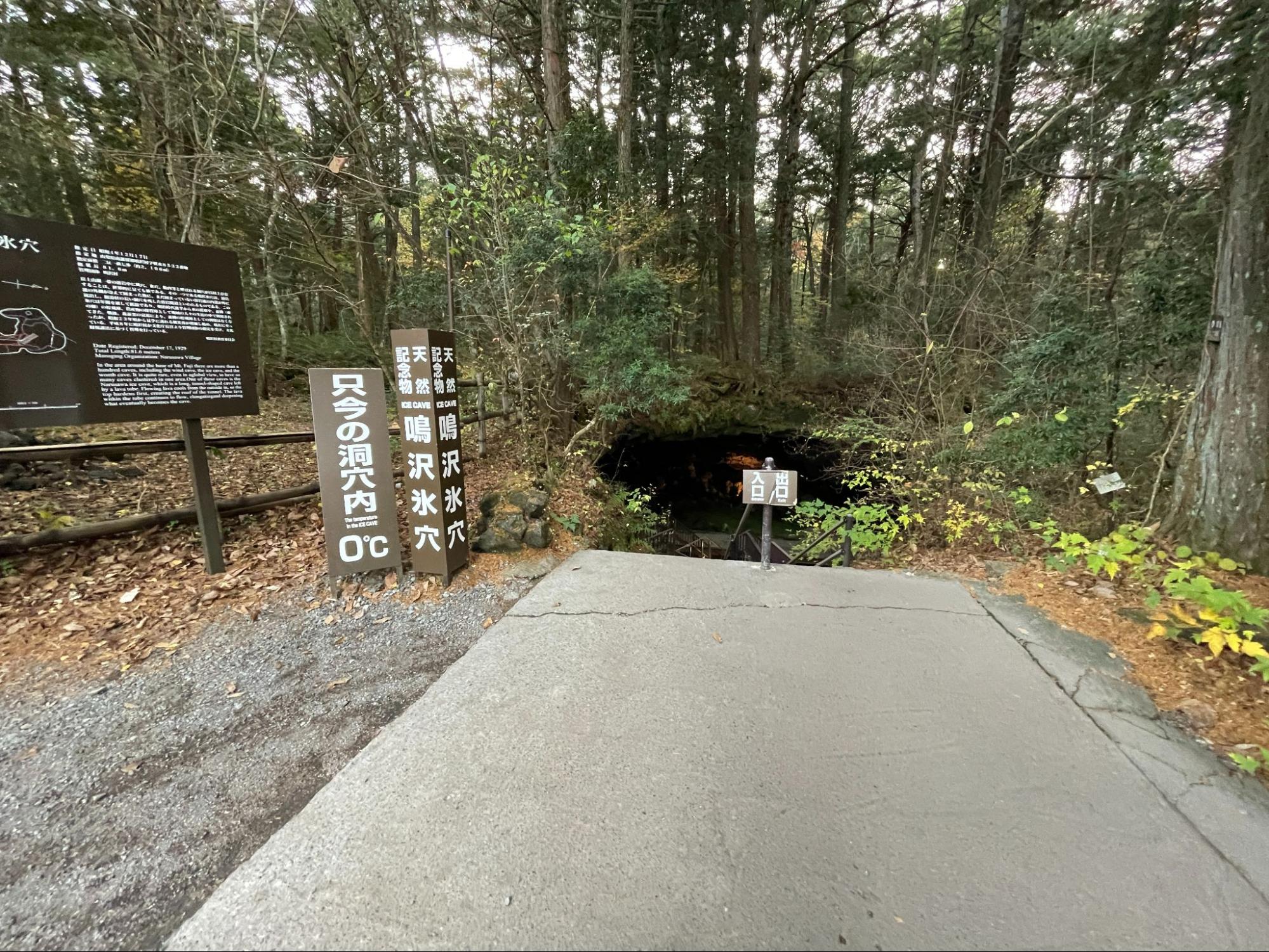
As you enter, the first dramatic sight is a lava tunnel with a ceiling only 91 cm (3 ft) high. Even shorter visitors must crouch deeply to make their way through. The ground is smooth and slippery, so hold onto the handrails and take each step carefully as you move deeper into the cave.
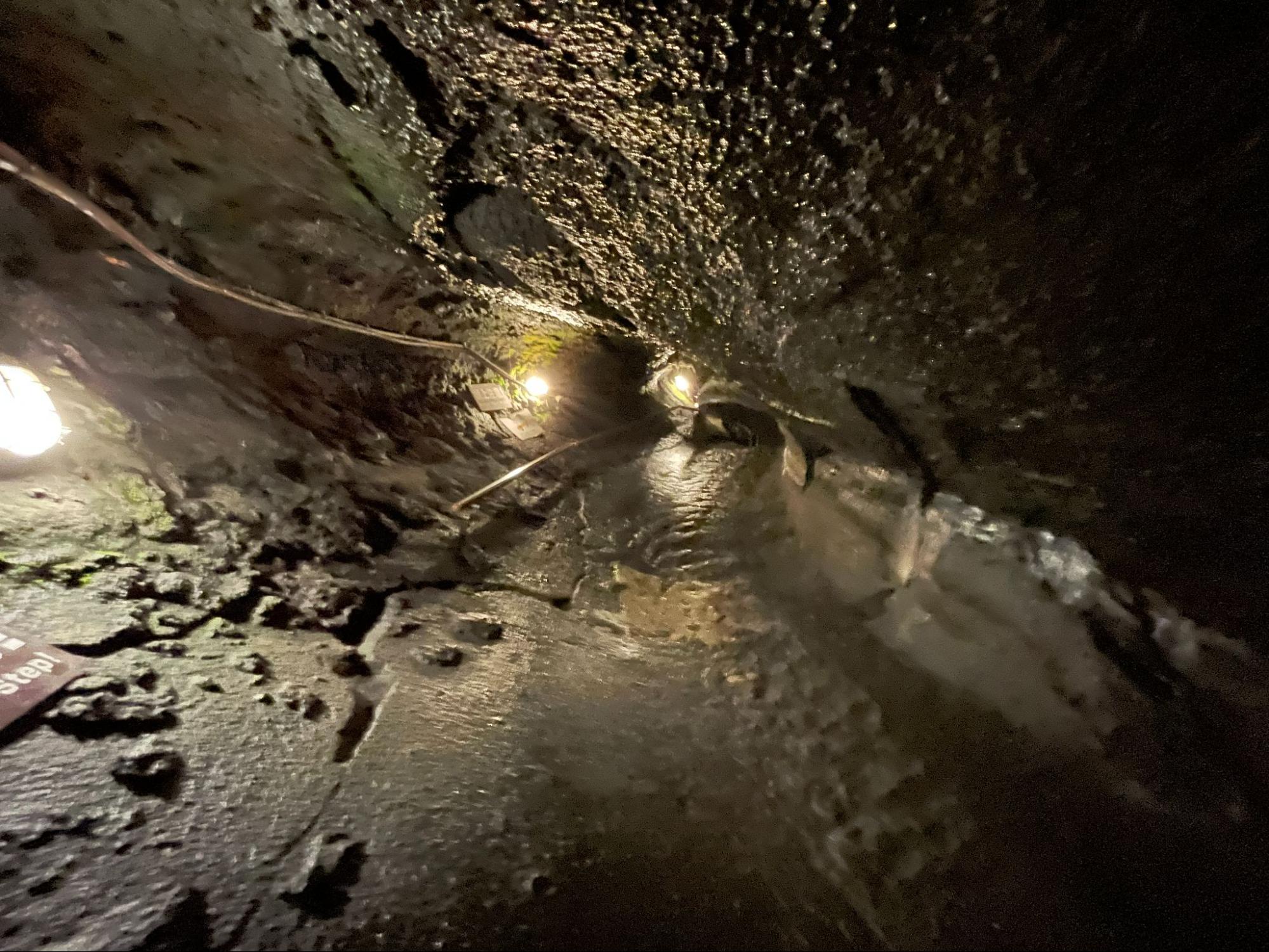
Soon after, you’ll come across the legendary “Hell Hole”—a dark, bottomless pit whose true depth remains a mystery. Local folklore even suggests that it stretches all the way to Enoshima Island in Kanagawa Prefecture, adding to the cave’s mysterious and otherworldly atmosphere.
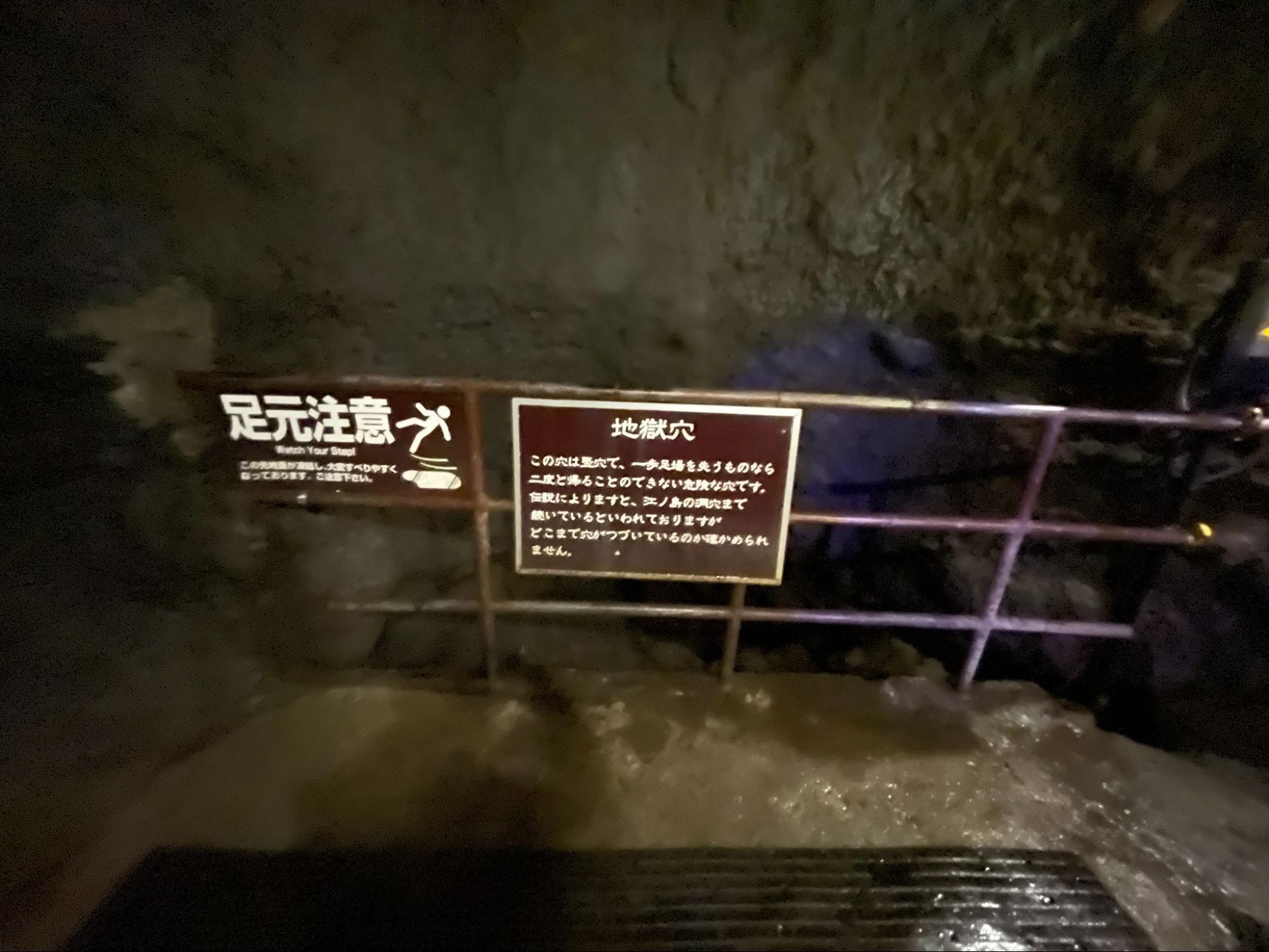
Are There Dragon Gods in the Forest?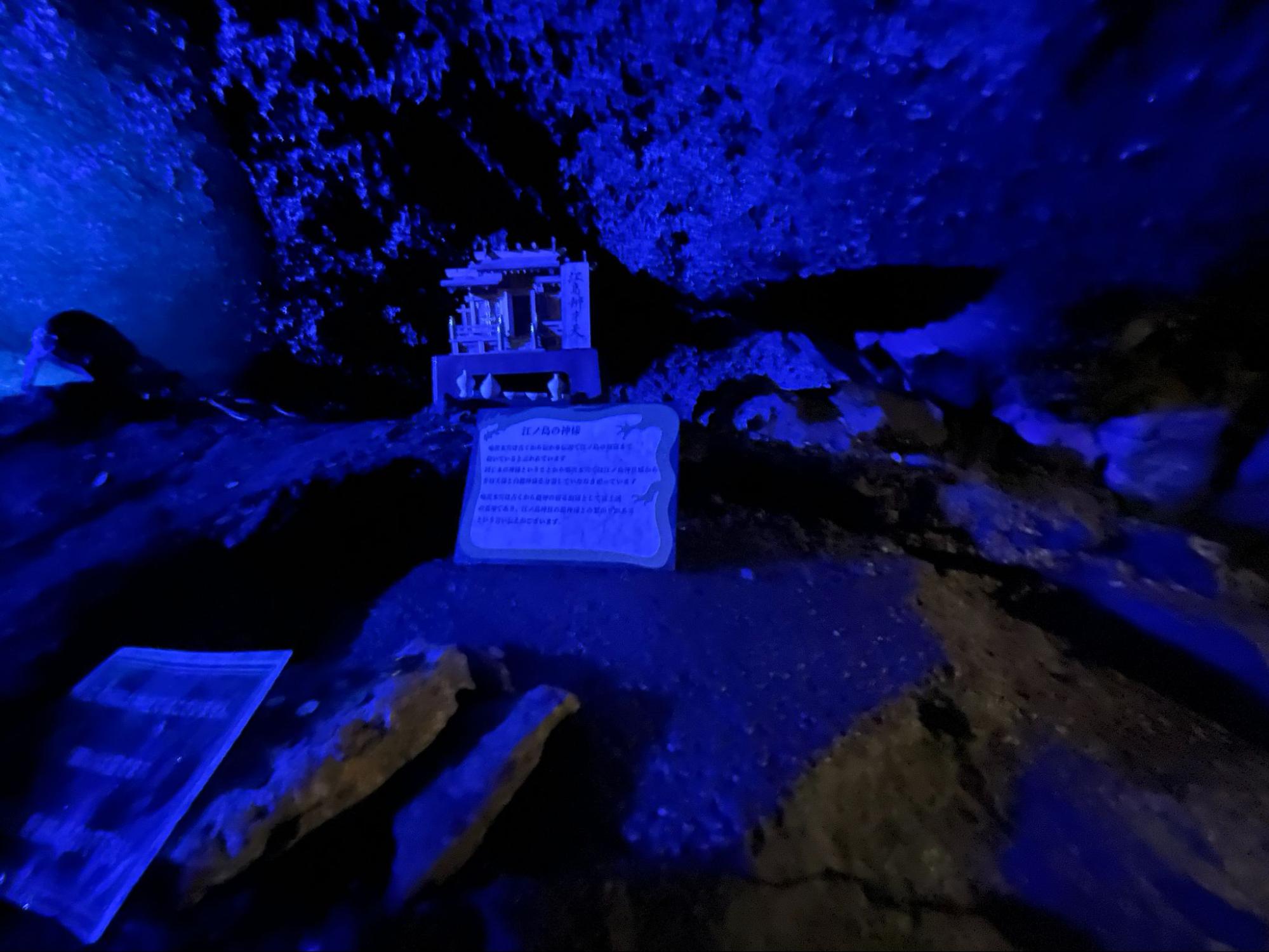
Inside Narusawa Ice Cave, you’ll find not just geological wonders but also spiritual ones. Two sacred shrines are tucked within the cave:
・One is dedicated to Kokuryūjin, the Black Dragon God, who is believed to dwell in the mystical Aokigahara Forest.
・The other honors Benzaiten and the White Dragon God, inspired by the legend that the cave’s Hell Hole is connected underground all the way to Enoshima Shrine in Kanagawa Prefecture.
Adding to the mystery, the cross-section of the cave resembles the shape of a dragon, a unique feature that fascinates both visitors and spiritual seekers. Walking through the lava tunnels, you may feel as if you’re traveling inside the belly of a dragon—an experience that blends natural wonder with local folklore.
Inside Narusawa Ice Cave, you can witness rare lava formations known as lava stalactites up close. Their column-like shapes, frozen in time, create an atmosphere so mysterious it will take your breath away.
From winter through late spring, the cave becomes even more magical when natural icicles form. The sight of shimmering ice pillars glowing in the cool darkness is an otherworldly experience you won’t find anywhere else.
Just outside the cave, a small shop offers local sweets—perfect for a refreshing break after your mini adventure. Don’t miss:
- Shingen Parfait, topped with Yamanashi’s famous Shingen Mochi
- Blueberry Parfait, made with fresh Narusawa-grown blueberries
Both are delightful local treats you can only taste here.
Exploring the cave takes about 15–30 minutes, making it a compact yet thrilling adventure. Keep in mind that the narrowest passages are only 91 cm high, so you’ll need to crouch down at times.
【Narusawa Ice Cave】
| Address | 8533 Narusawa, Minamitsuru District, Yamanashi 401-0320 |
|---|---|
| Phone | 0555-85-2301 |
| Business hours | 9:00~17:00 |
| Closed | Irregular holidays in December only; open year-round otherwise |
| Price | Adults ¥350 / Children ¥200 (as of March 2025) |
| Website | https://www.mtfuji-cave.com/contents/ice_cave/ |
What is the Fugaku Wind Cave?
The History of the Fugaku Wind Cave
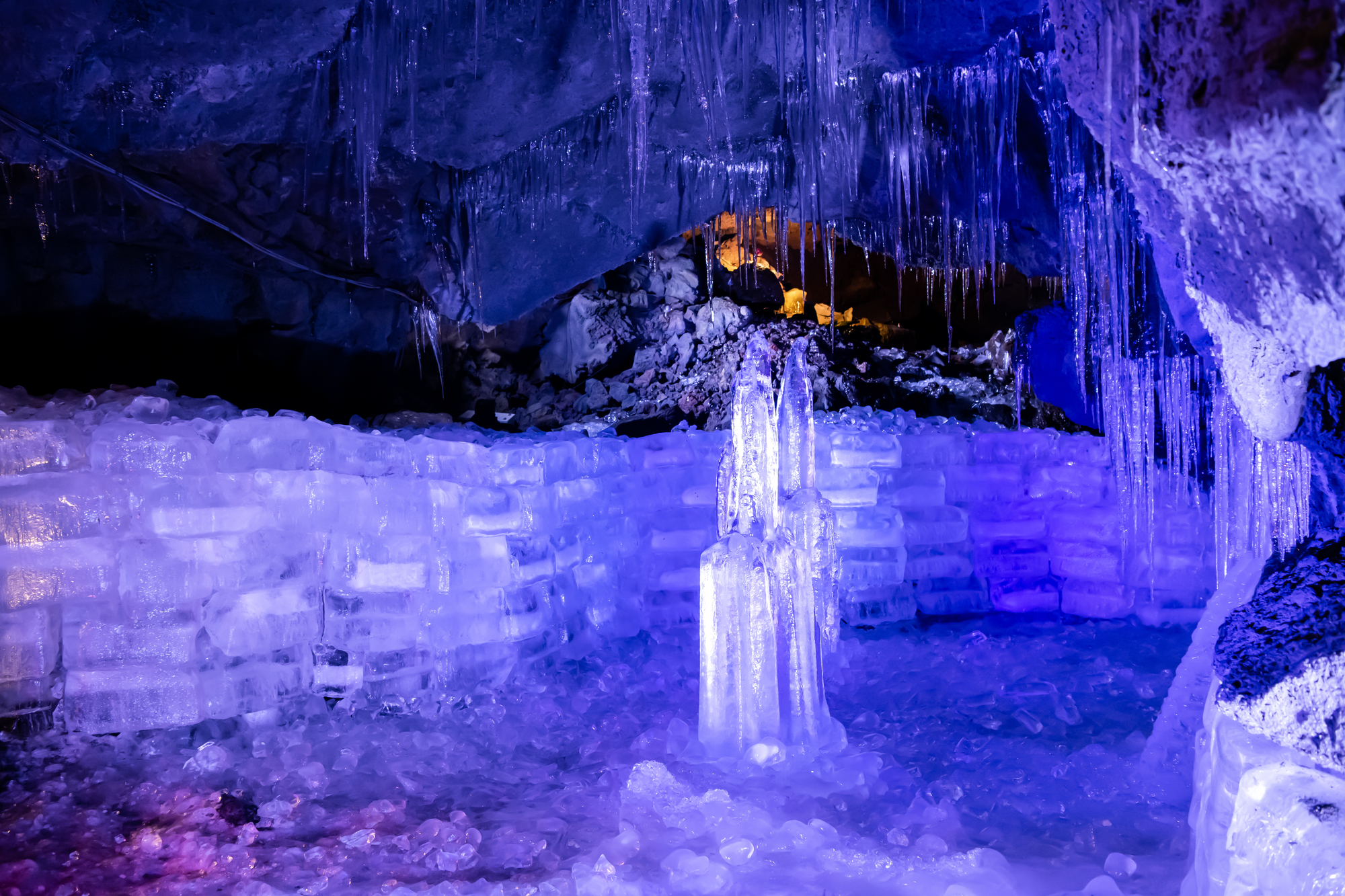
The Fugaku Wind Cave is a fascinating lava cave created by the eruption of Mt. Fuji. Unlike the Narusawa Ice Cave, this one was formed when the upper layer of lava hardened first, while molten lava continued to flow beneath it, leaving behind a hollow cavity.
One of its unique features is its basalt walls filled with tiny air bubbles—this structure absorbs sound, so the cave is remarkably quiet with almost no echoes.
Another highlight is its natural “refrigerator effect.” Cold air keeps the interior temperature at a constant around 3°C (37°F) year-round. Even ice that forms in winter often remains frozen well into summer. Because of its geological and cultural significance, the Fugaku Wind Cave was designated a National Natural Monument in December 1929.
This extraordinary underground world not only tells the story of Mt. Fuji’s volcanic past but also offers visitors a refreshing escape, especially in the hot summer months.
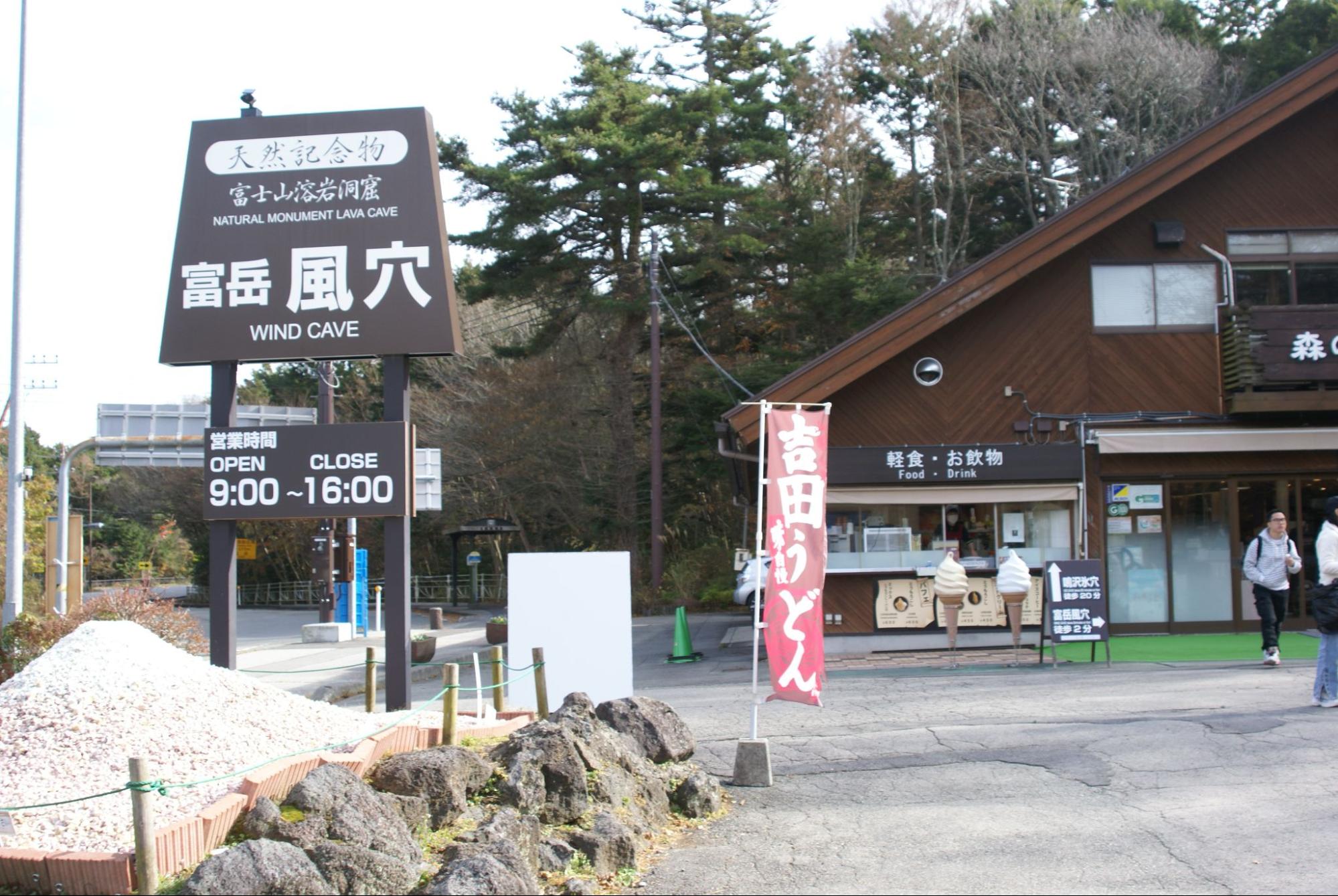
Exploring the Inside of the Fugaku Wind Cave
First, purchase your entrance ticket! If you already bought a combined ticket with the Narusawa Ice Cave, simply show it here for entry. Helmets are available to borrow, as parts of the cave can be narrow and low.

Descending the staircase, you’ll immediately notice the ceiling is quite low near the entrance—watch your head as you step inside.
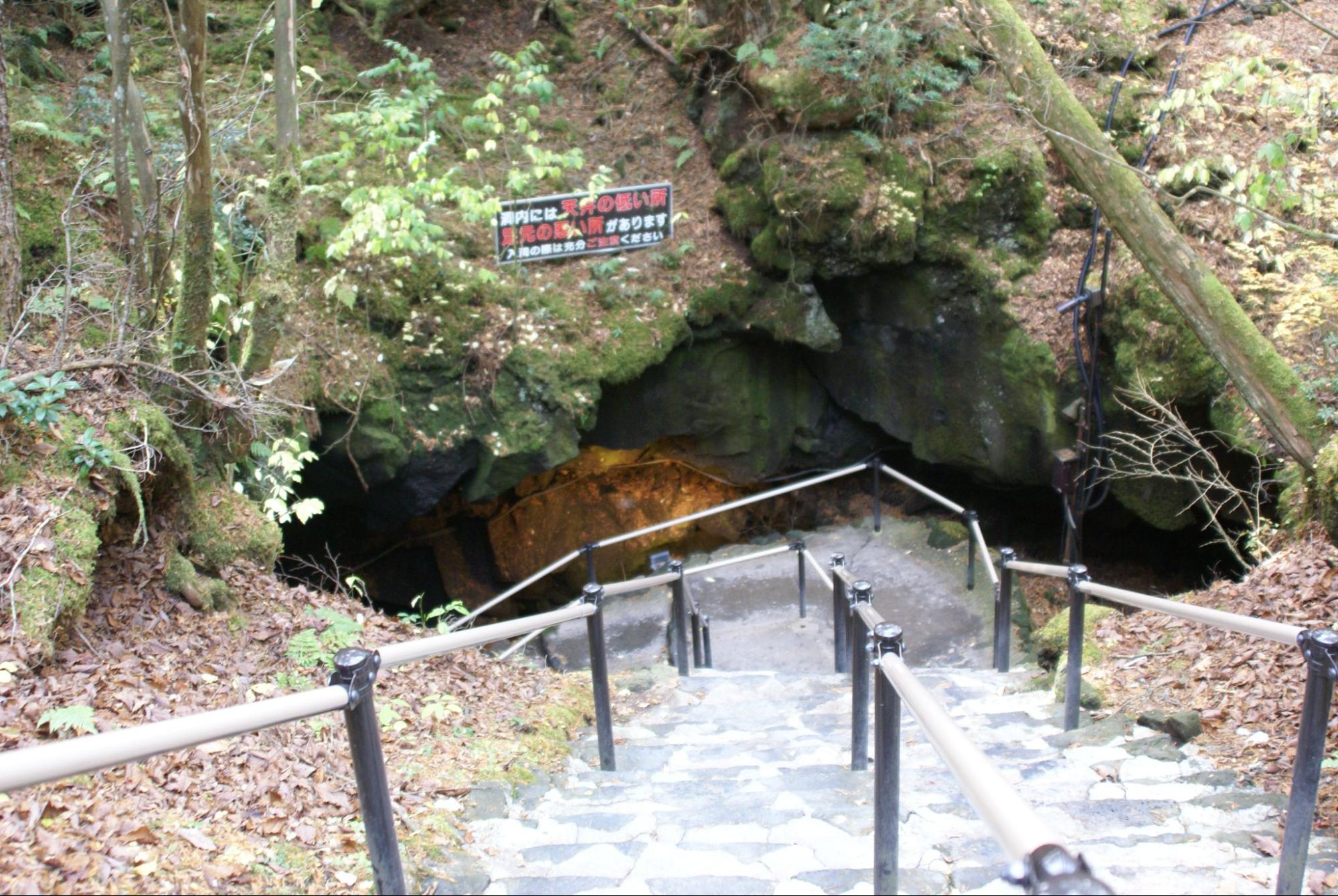
Lava Terraces (Yogan-dana)
Formed when the surface layers of lava cooled and hardened, while semi-molten lava continued to flow beneath. These shelves remain as striking geological features.
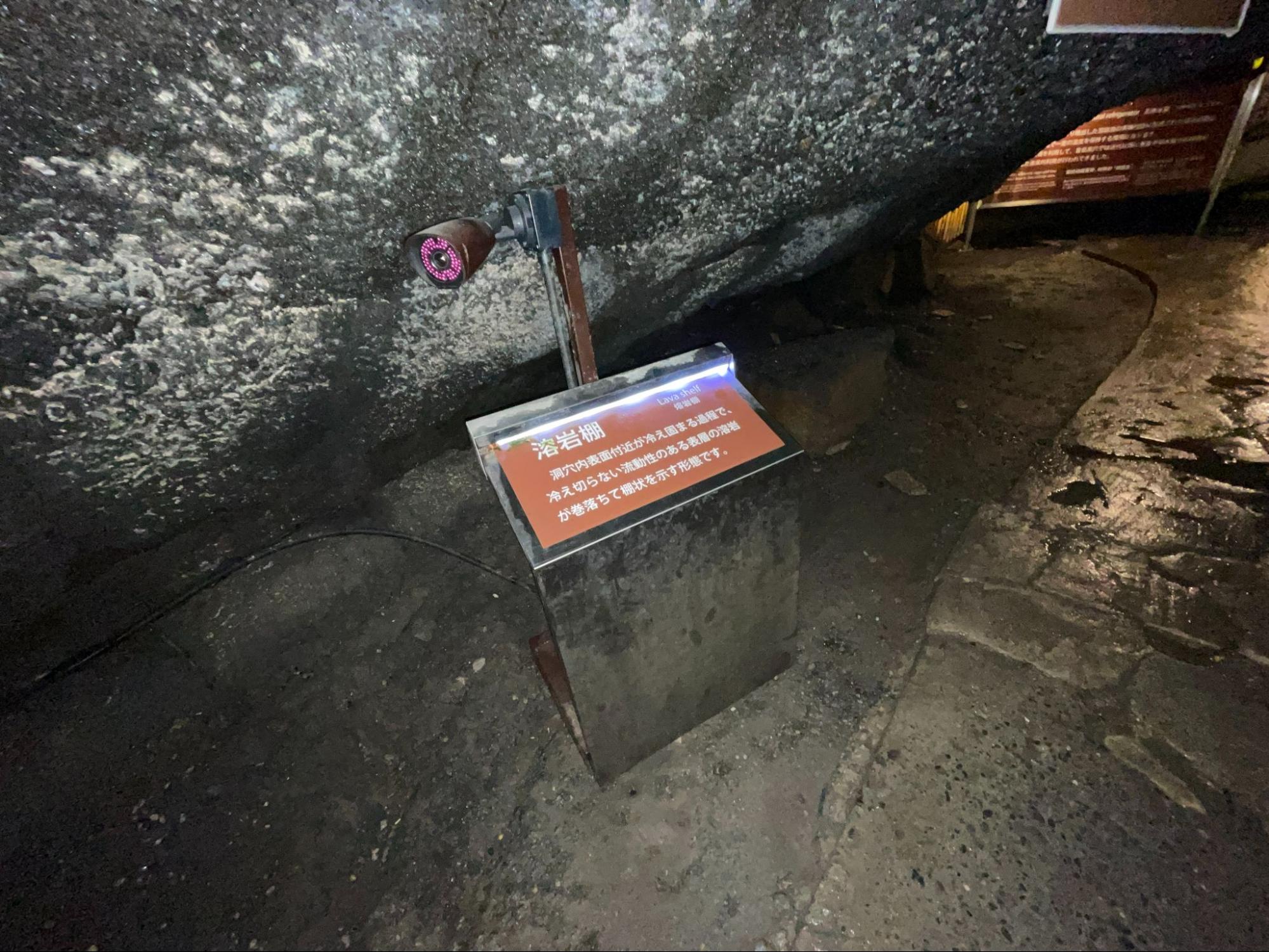
Rope Lava (Nawajō-yōgan)
Created when molten lava pushed forward over already-cooled layers, leaving behind rippled, rope-like patterns. They resemble bundles of twisted ropes frozen in time.
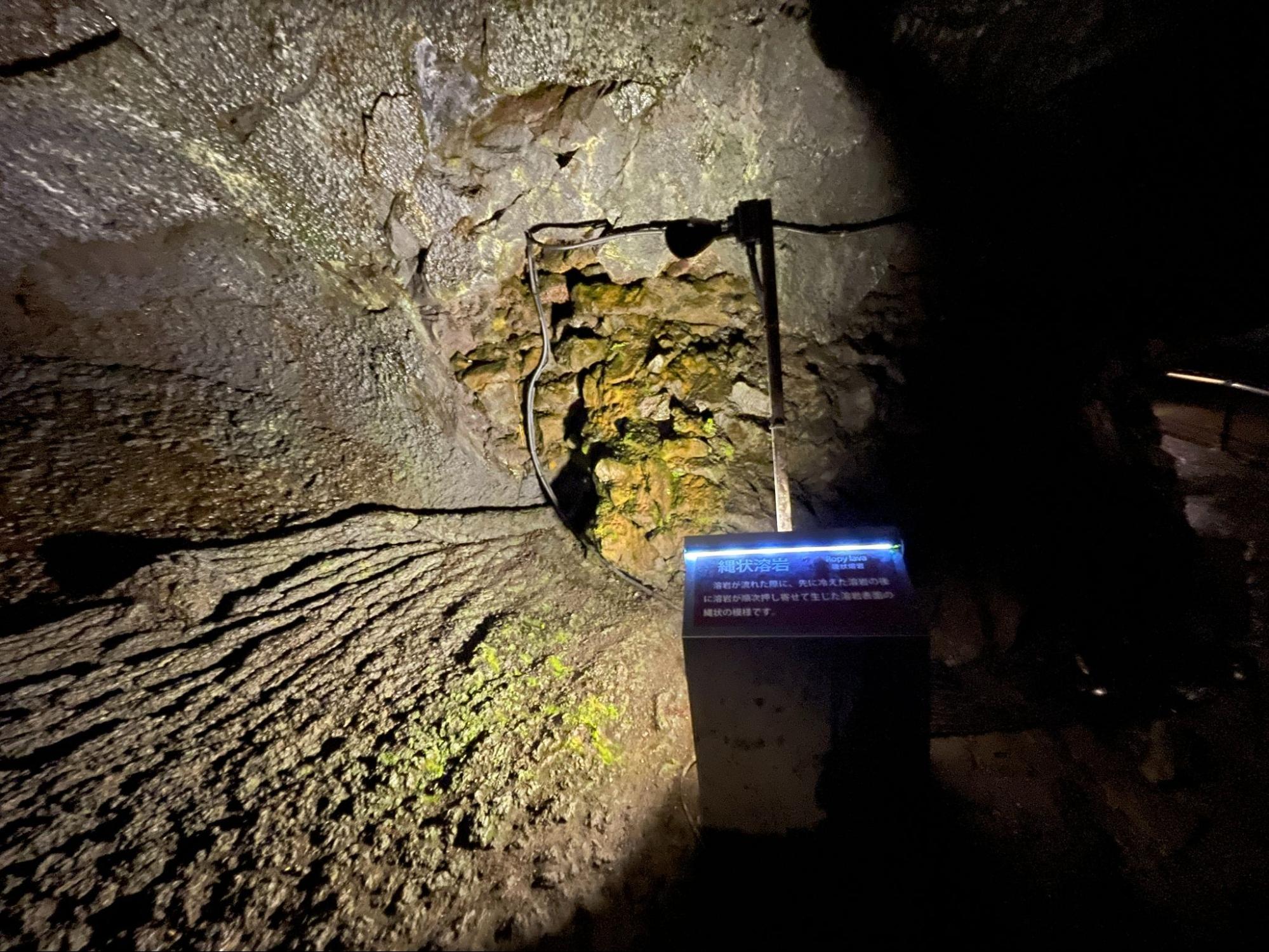
Silkworm & Seed Storage Room
The cave’s most unique exhibit is the storage chamber used until around 1955. Thanks to the cave’s constant low temperature (about 3°C), silkworm eggs and seeds were once preserved here—earning the Wind Cave its nickname as a “natural refrigerator.”
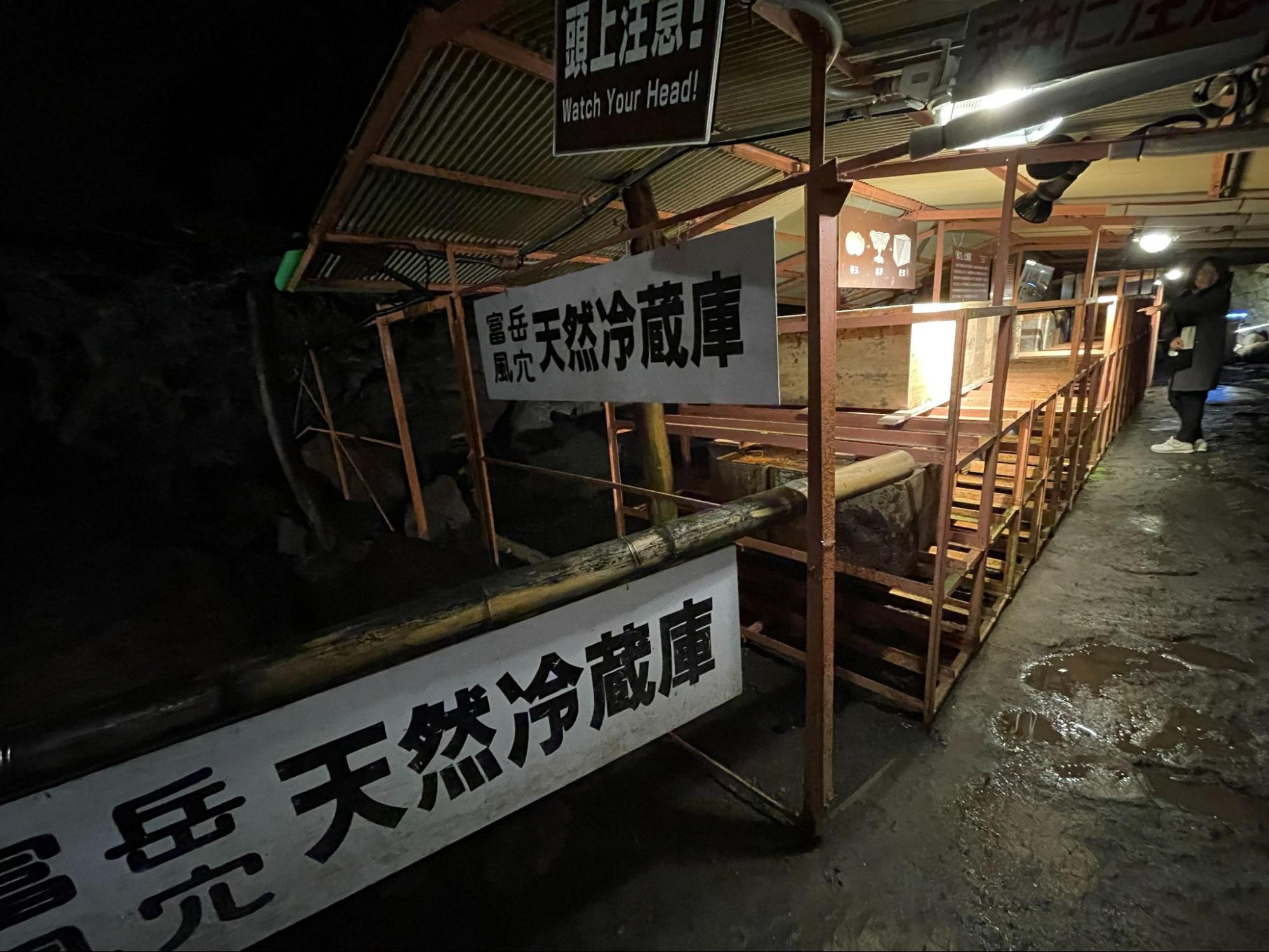
Hikarigoke (Luminous Moss)
At the deepest section, you’ll find rare luminous moss that reflects emerald-green when exposed to light. This mysterious, glowing sight is unforgettable and feels almost otherworldly.
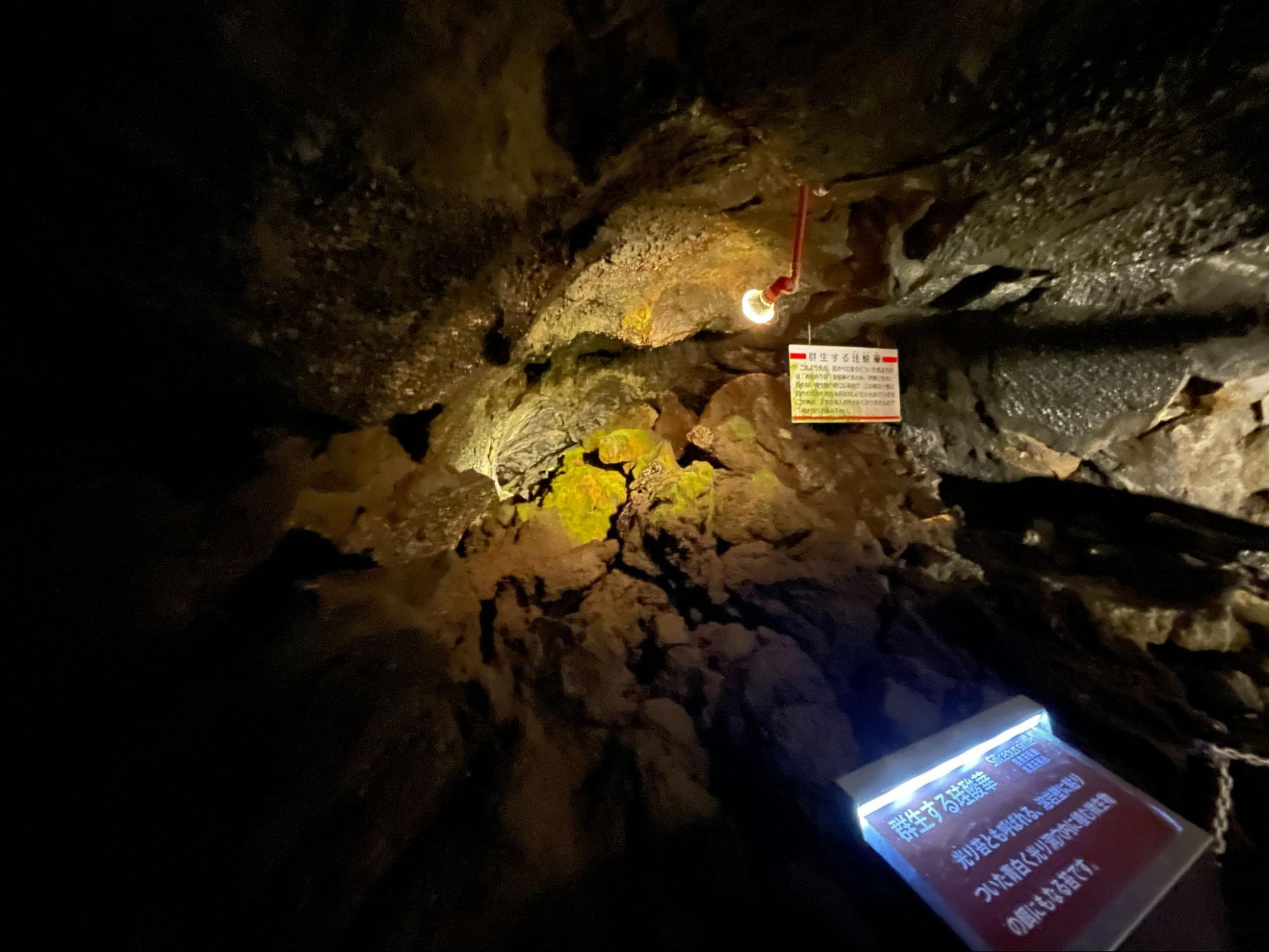
After the Cave Experience
Right outside the cave, a small shop awaits. Here you can try corn-based treats made with Yamanashi’s local sweet corn, such as soft-serve ice cream and parfaits. You’ll also find original Fugaku Wind Cave goods to take home as souvenirs.
The Fugaku Wind Cave offers not just geology, but history, culture, and even local flavors all in one stop—making it a must-visit attraction in Narusawa Village.
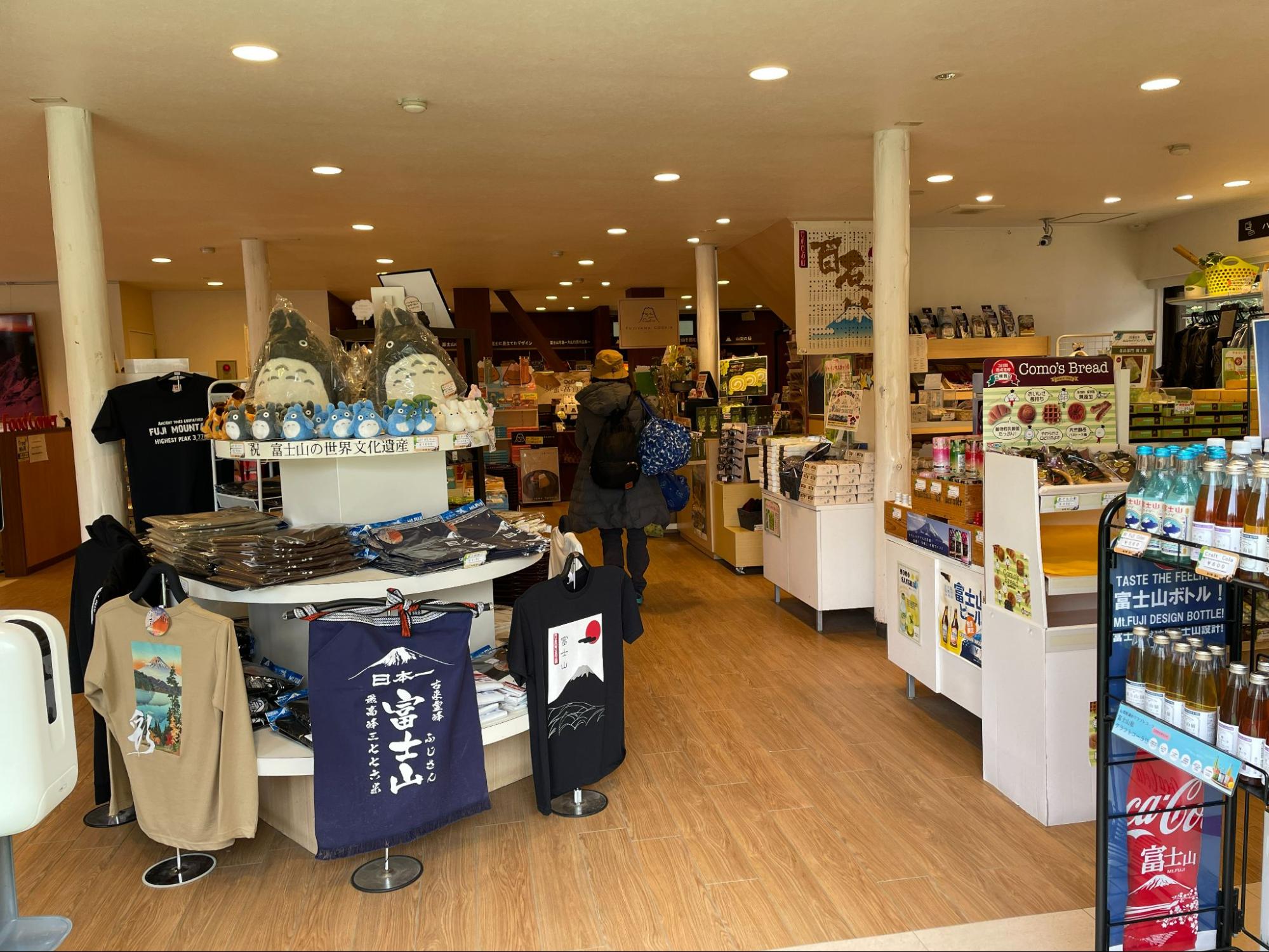
【Fugaku Wind Cave】
| Address | 2068-1 Saiko Aokigahara, Fujikawaguchiko Town, Minamitsuru District, Yamanashi 401-0332 |
|---|---|
| Phone | 0555-85-2300 |
| Business hours | 9:00~17:00 |
| Closed | Irregular holidays in December, otherwise open year-round |
| Price | Adults ¥350 / Children ¥200 (as of March 2025) |
| Website | https://www.mtfuji-cave.com/contents/wind_cave/ |
Nearby Spots to Enjoy Together
Tokai Nature Trail
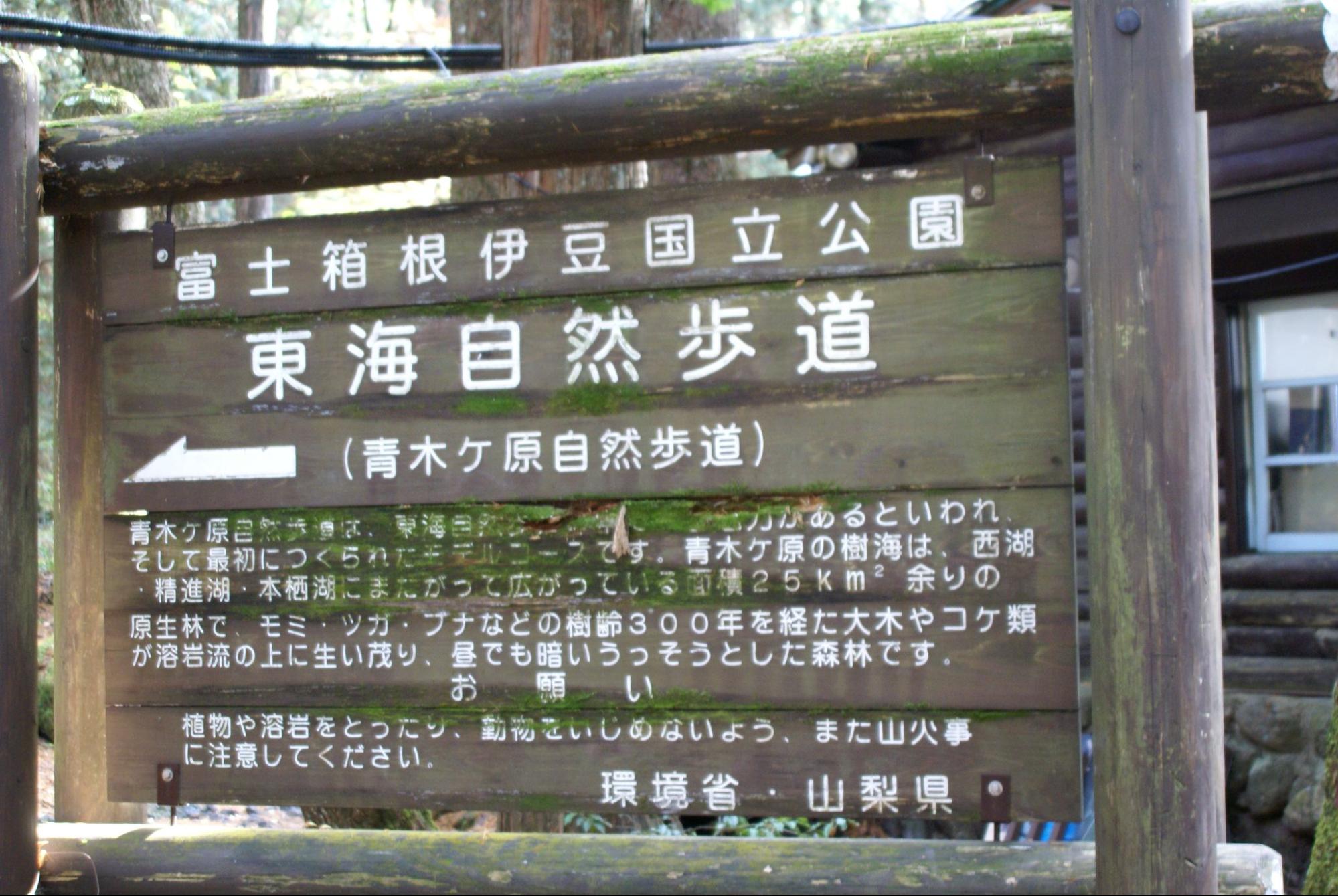
If you visit both Narusawa Ice Cave and Fugaku Wind Cave, we highly recommend combining them with the Tokai Nature Trail.
This 1.7 km walking path connects the two caves, passing through the lush Aokigahara Forest at the foot of Mt. Fuji. The route takes about 20 minutes on foot and is well maintained, making it easy to enjoy without hiking gear.
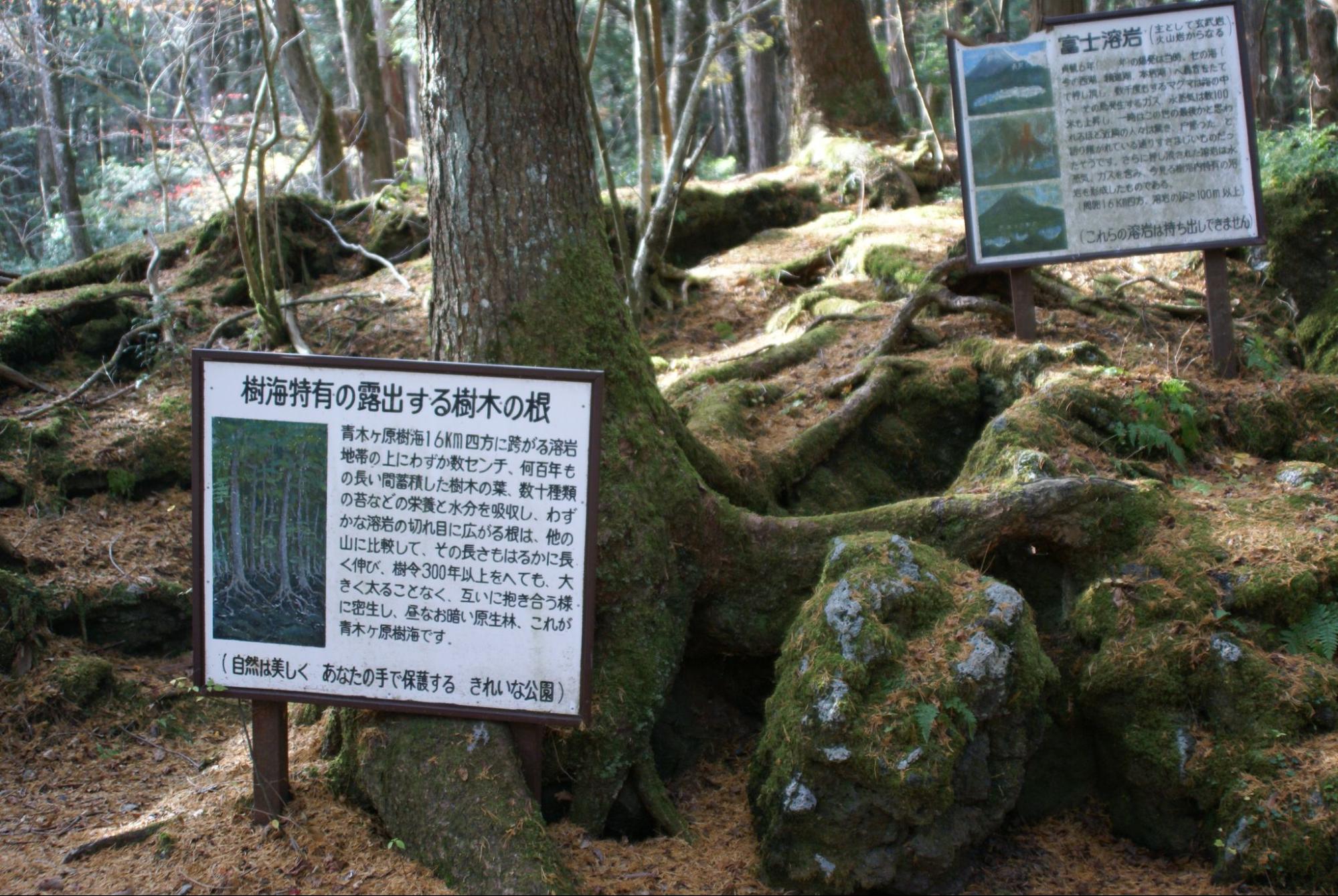
Along the way, you’ll walk over rugged lava terrain and through a silent, mystical forest that feels like stepping back in time. With luck, you may encounter rare wildlife such as:
- Robins (Komadori) with their charming songs
- Ancient dragonflies (Mukasitonbo), often called “living fossils”
Did you know? The Tokai Nature Trail is actually part of a 1,697.2 km long trail that stretches across Japan, from Meiji no Mori Takao Quasi-National Park in Tokyo all the way to Meiji no Mori Minoh Quasi-National Park in Osaka. Walking between the caves could be your first step toward this epic cross-country journey!
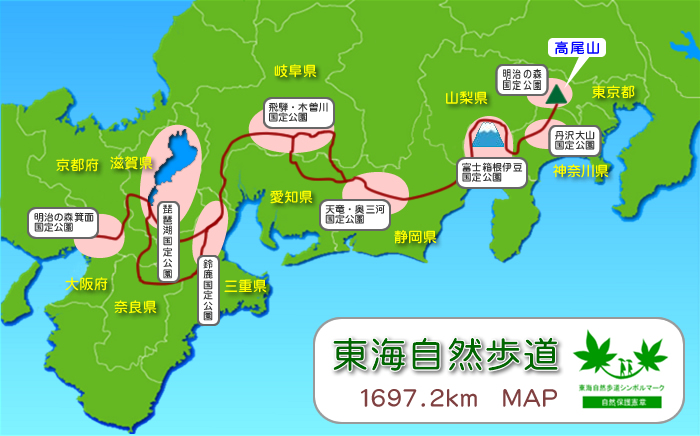
Aokigahara Forest Guided Tour
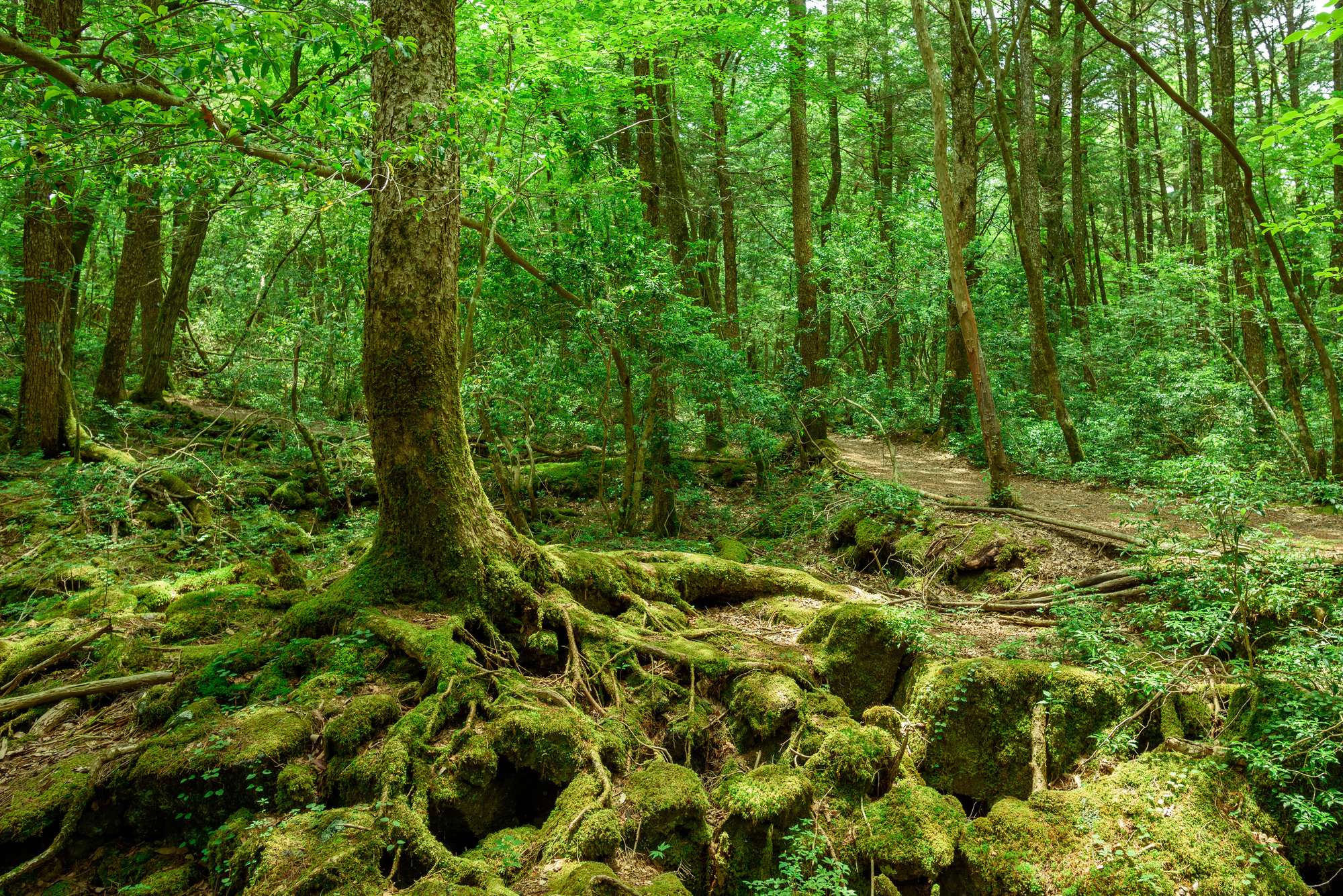
If you’d like to dive deeper into the history and ecology of the Aokigahara Forest, consider joining a guided forest exploration tour.
The tour departs from Glamping Village Fuji Kawaguchiko, one of the largest villa & glamping resorts in Yamanashi, where you can also enjoy hot spring baths and private BBQs.
Led by professional nature guides, the tour explains the forest’s volcanic origins, unique ecosystem, and the fascinating flora and fauna that thrive here. It’s an educational yet adventurous way to experience the “Sea of Trees.”
Perfect for families, couples, and anyone looking for an outdoor activity with deeper insights into Mt. Fuji’s natural environment.
【Aokigahara Forest Guided Tour】
| Address | Meeting Point: Glamping Village Fuji Kawaguchiko |
|---|---|
| Phone | 070-4484-5408 |
| Business hours | 9:00〜18:00 |
| Closed | November–March |
| Price | Adults ¥350 / Children ¥200 (as of March 2025) |
| Website | https://yamanashi-activity.com/activity/sea-of-trees_explore/ |
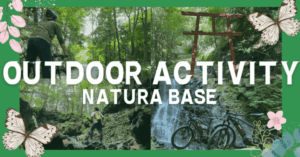
Summary
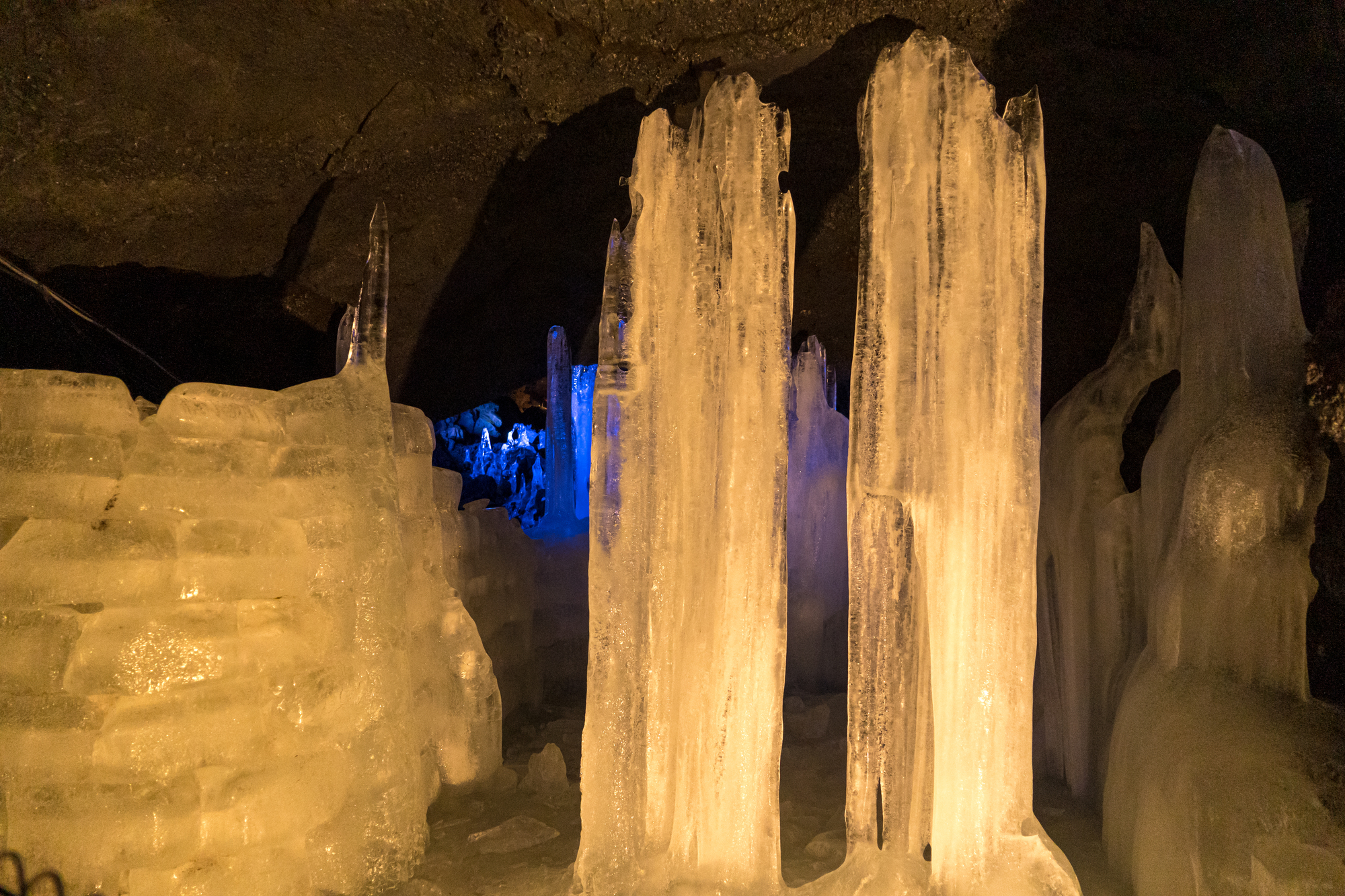
In this article, we introduced two of Japan’s National Natural Monuments with over 1,200 years of history — Narusawa Ice Cave and Fugaku Wind Cave.
With the combined ticket (¥600 for adults / ¥300 for children), you can conveniently explore both caves in one trip (as of September 2024).
Keep in mind that natural ice formations are not present year-round — the best time to see them is in spring or summer.
Since the cave floors can be slippery, be sure to wear sneakers or other sturdy shoes for safety.
And for those planning an overnight trip, don’t forget to check out the recommended nearby accommodations that make your cave adventure even more enjoyable!
Recommended for You! Featured Articles You May Also Like
-

Enjoy Outdoor Adventures at the Foot of Mt. Fuji! NaturaBase Activities with Exclusive Discounts
-



Play, Eat, Shop, Stay at Lake Yamanakako – The “ACCOMMODATION” Edition
-


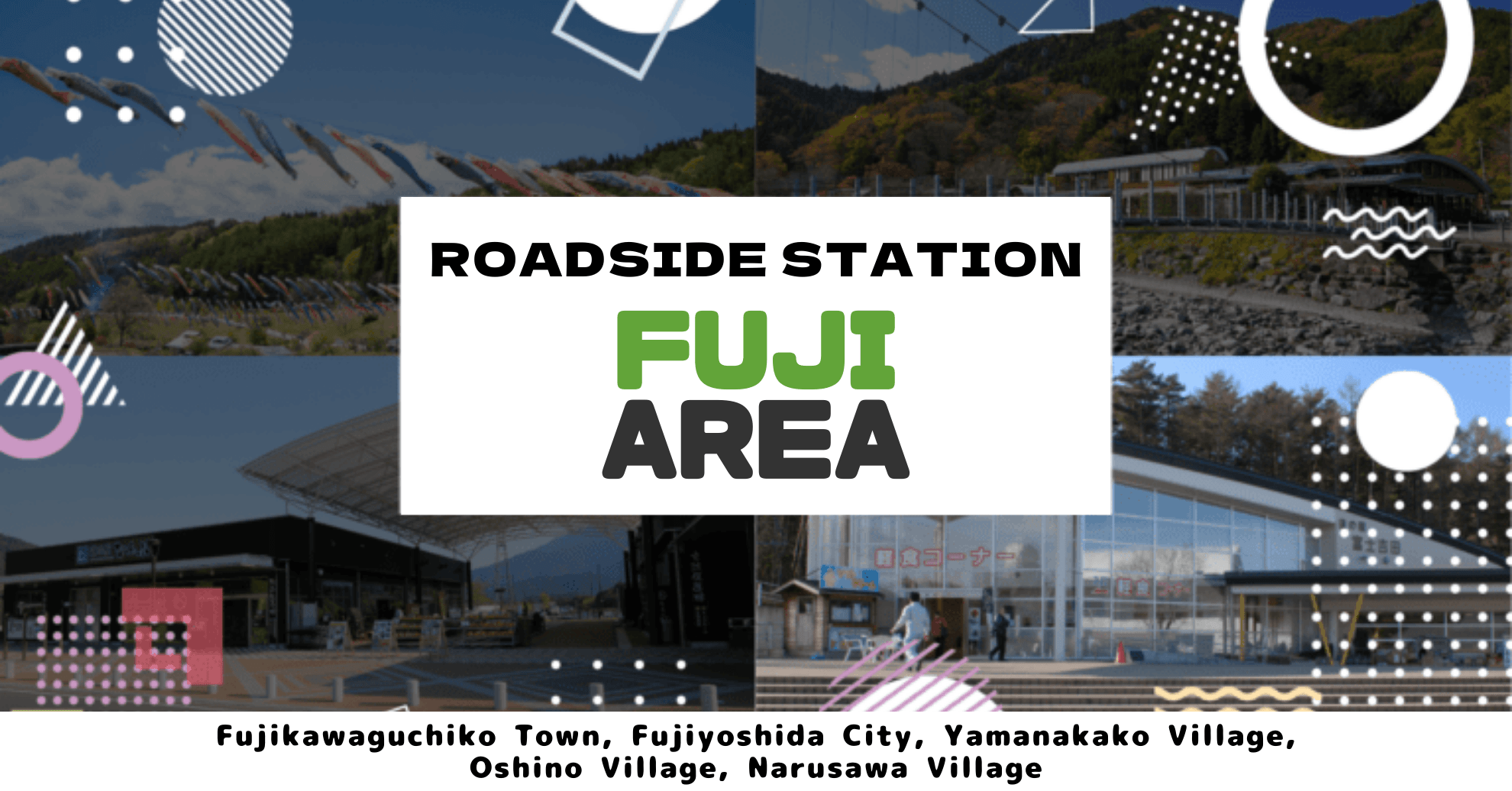
Take a Break at the Foot of Mt. Fuji! Michi-no-Eki – Roadside Stations in Yamanashi’s Fuji Area
-


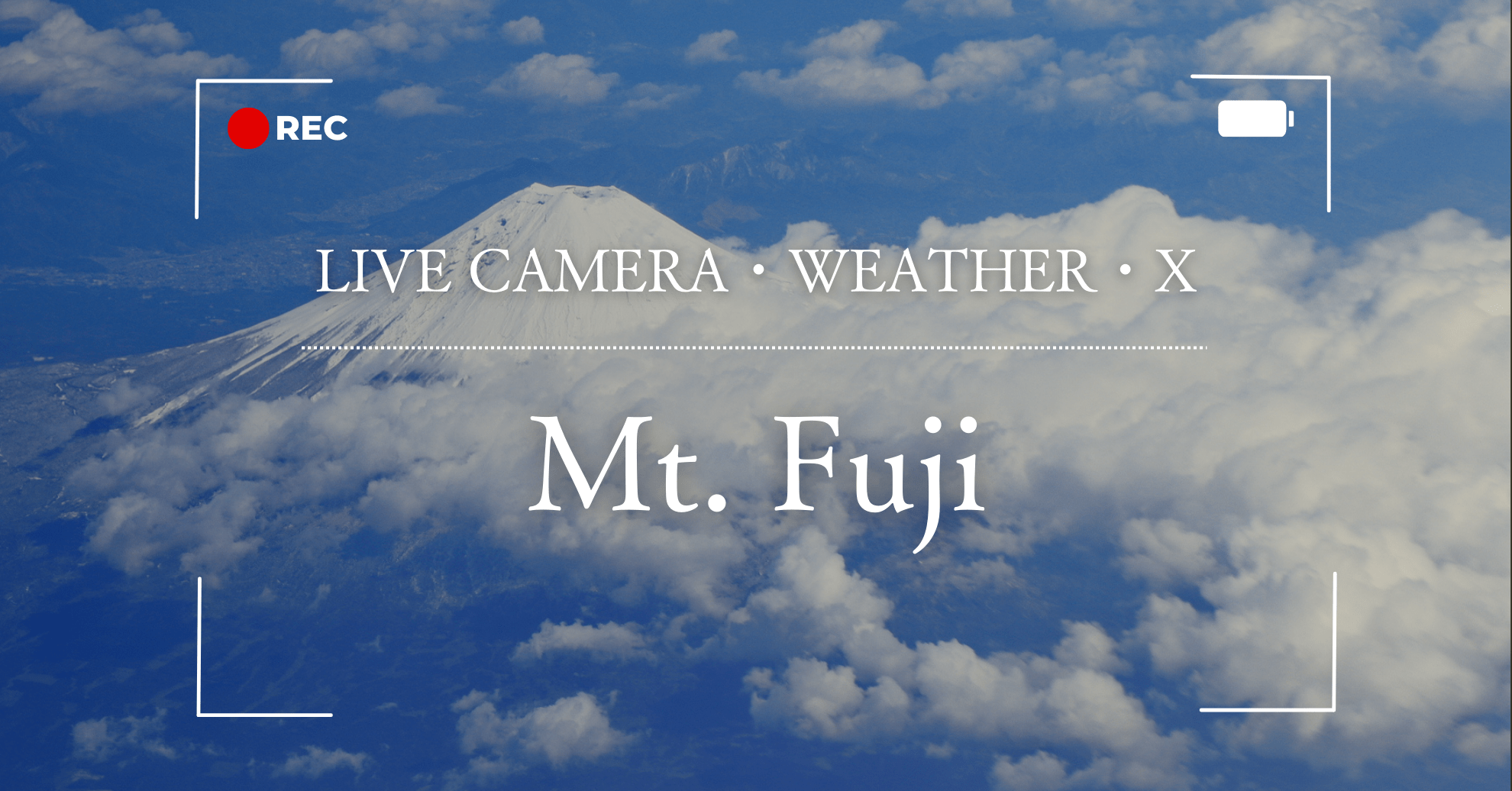
【Fuji Area】Mt. Fuji, Yamanashi – Live Cameras, Weather & X
-


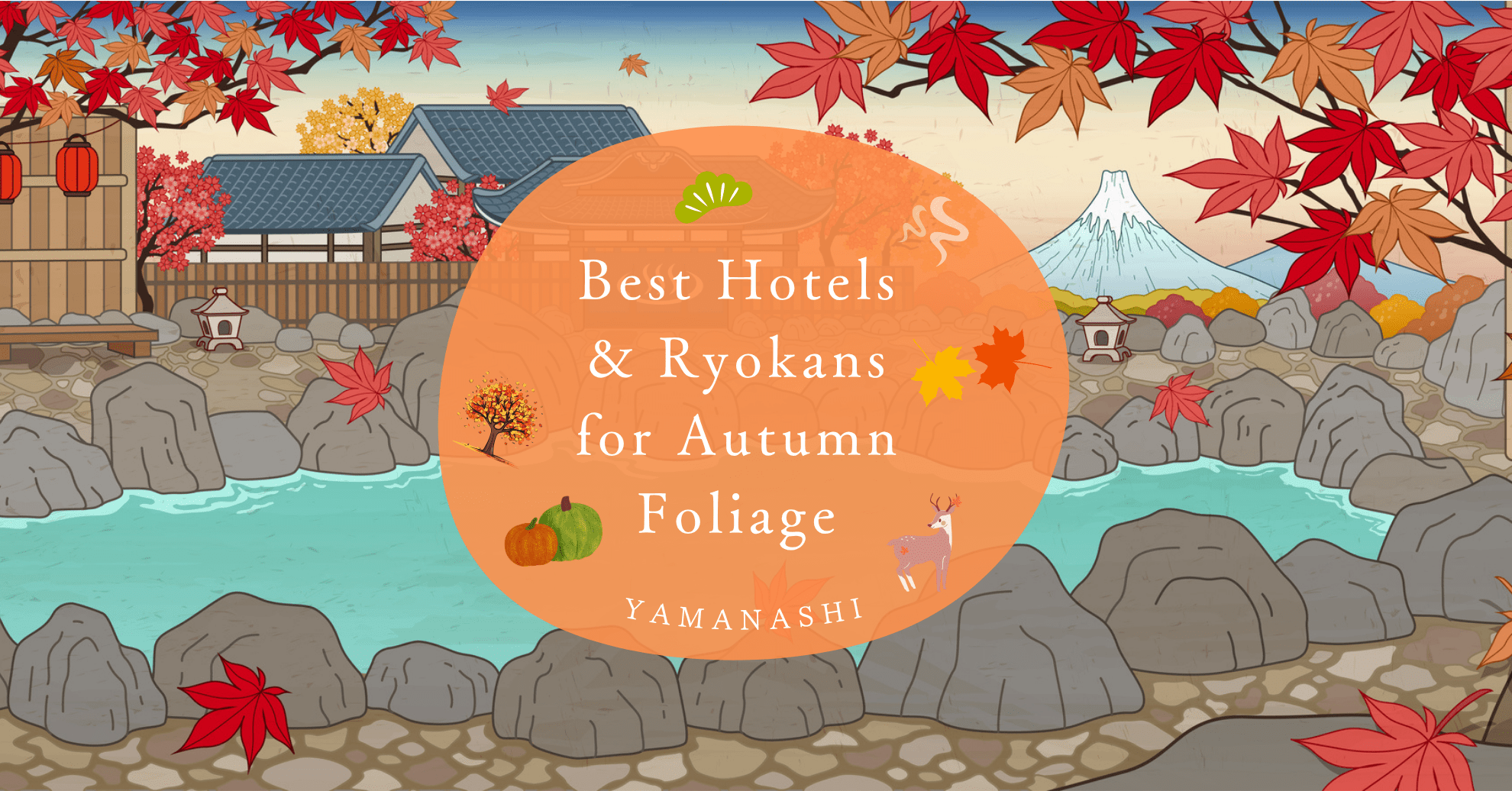
[2025] Experience Japan’s Autumn in Yamanashi | A Guide to the Best Hotels and Ryokans for Fall Foliage
-



Discover the Yuru-Chara of Yamanashi! Unique Local Mascots and Their Stories

